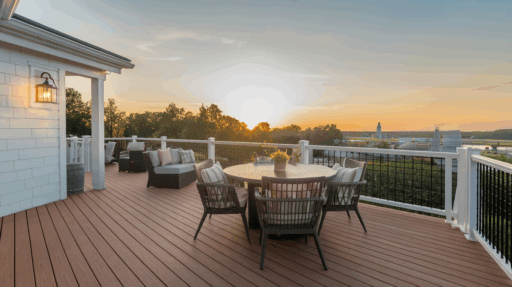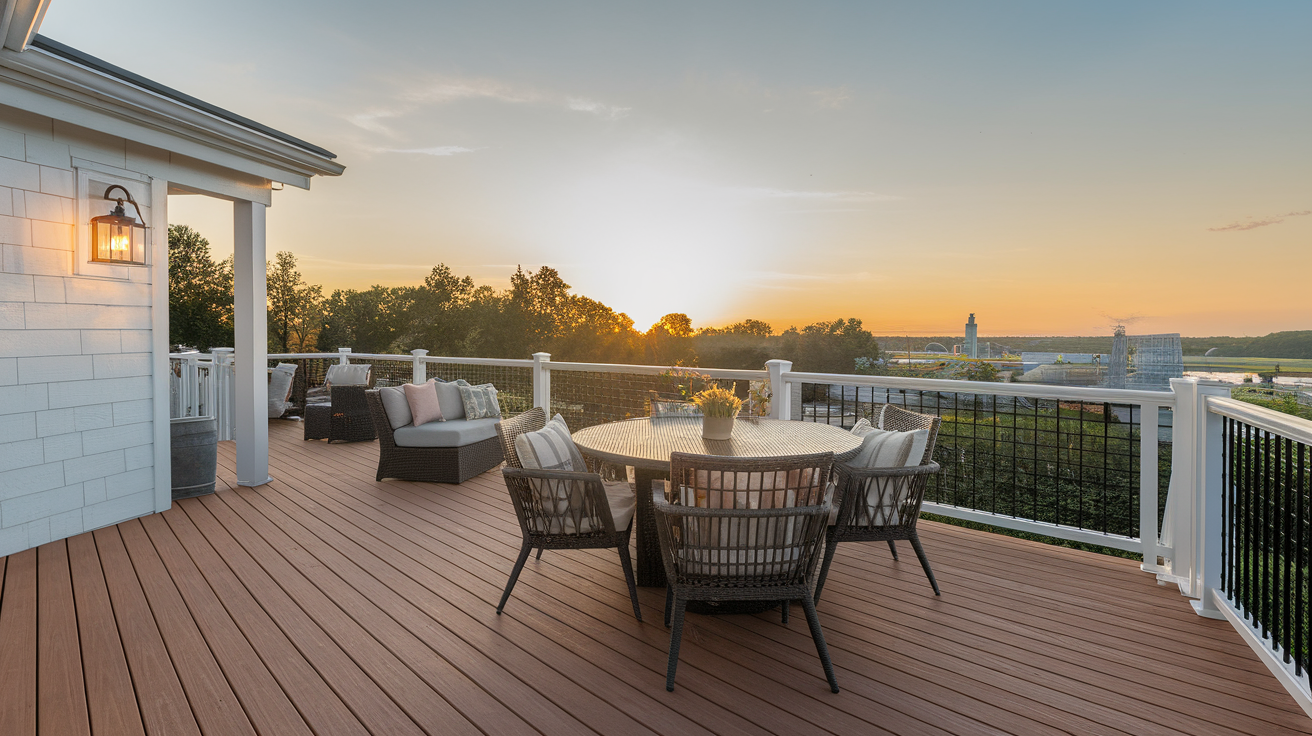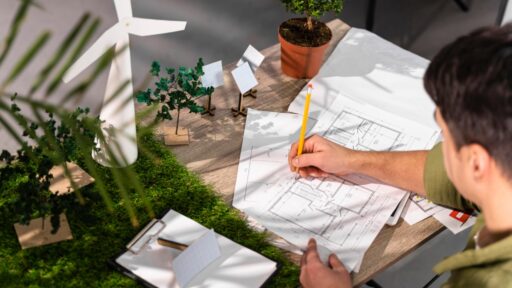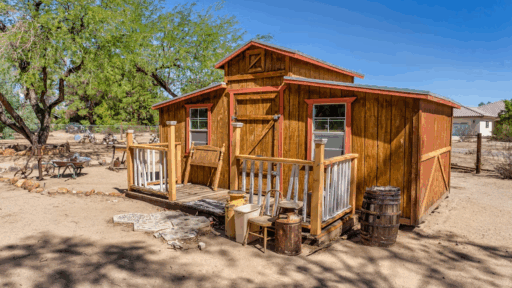Composite decking has become one of my favorite alternatives to traditional wood for building outdoor decks.
Made from a blend of recycled wood fibers and plastic, it mimics the appearance of real wood without the need for regular upkeep.
I don’t have to worry about warping, cracking, or splinters like I would with natural wood.
That’s why more and more homeowners, including me, are turning to composite decking. It’s tough, low maintenance, and stands up to moisture, bugs, and fading over time.
There’s no need for sanding, staining, or sealing; just an occasional cleaning is required. If you want a beautiful deck without the constant work, it’s a smart pick.
But I’ve learned that not all composite decking is the same. Some boards are capped, some are not. Some are solid, while others are hollow. Each type has its own pros and cons.
In this guide, I’ll walk you through the most common types of composite decking so you can find the right one for your home and lifestyle.
What Is Composite Decking?

Composite decking is a man-made building material designed to resemble real wood, but with enhanced strength and durability.
It’s made by blending wood fibers (like sawdust or wood chips) with plastic (usually recycled polyethylene or polypropylene).
The result is a board that’s strong, weather-resistant, and easier to care for than natural wood.
This type of decking was first introduced in the early 1990s as a low-maintenance alternative for homeowners who were tired of sanding and staining their wooden decks annually.
Today’s boards are available in a wide range of colors, textures, and finishes; some even mimic the grain patterns of real hardwood.
Many modern boards are “capped” with an added protective layer, making them more durable and fade-resistant than ever before.
Composite decking now offers the look of wood with less hassle.
Types of Composite Decking
Composite decking isn’t one-size-fits-all. There are several types available, each offering unique features based on its construction, materials used, and the kind of finish it has. Some are better suited for wet climates, while others offer a more natural appearance.
1. Capped Composite Decking
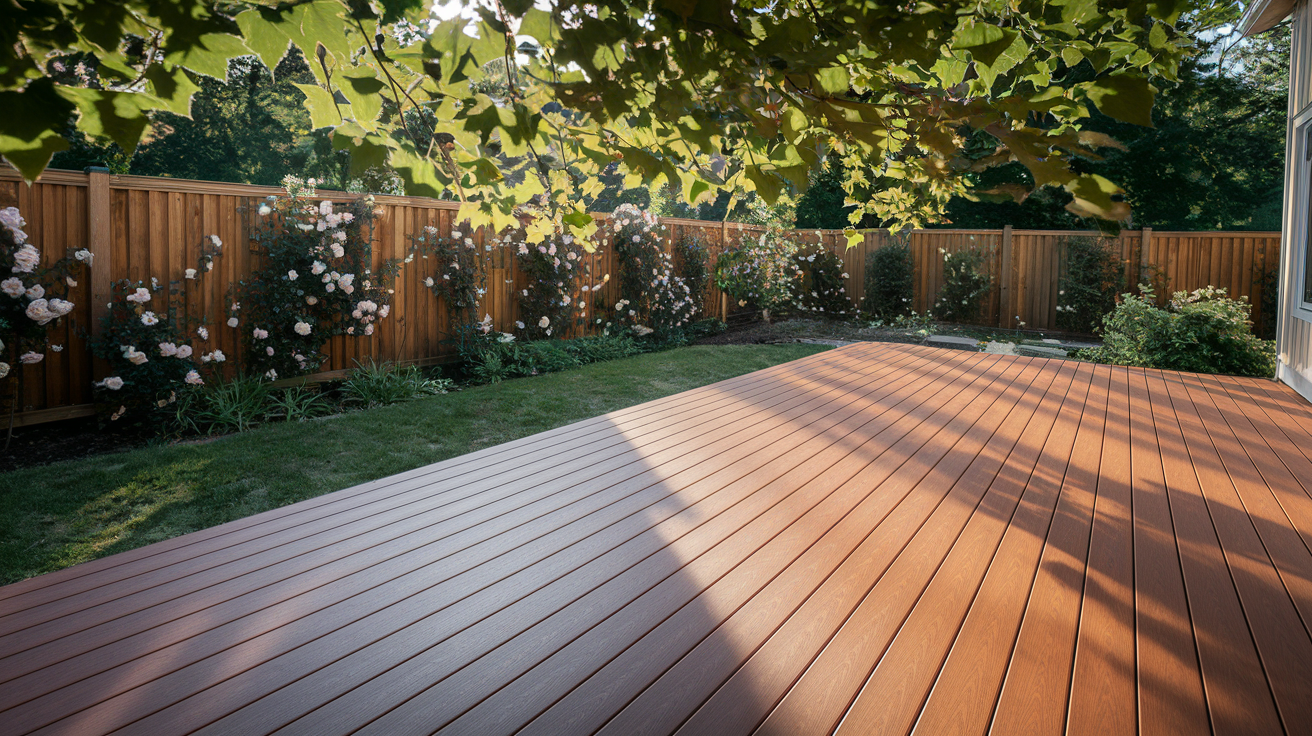
Capped decking has a tough outer shell that protects against stains, fading, and moisture. It’s highly durable and ideal for areas with harsh weather.
The cap also enhances color retention and appearance, making it a popular choice for homeowners who want long-lasting performance with minimal upkeep.
2. Uncapped Composite Decking
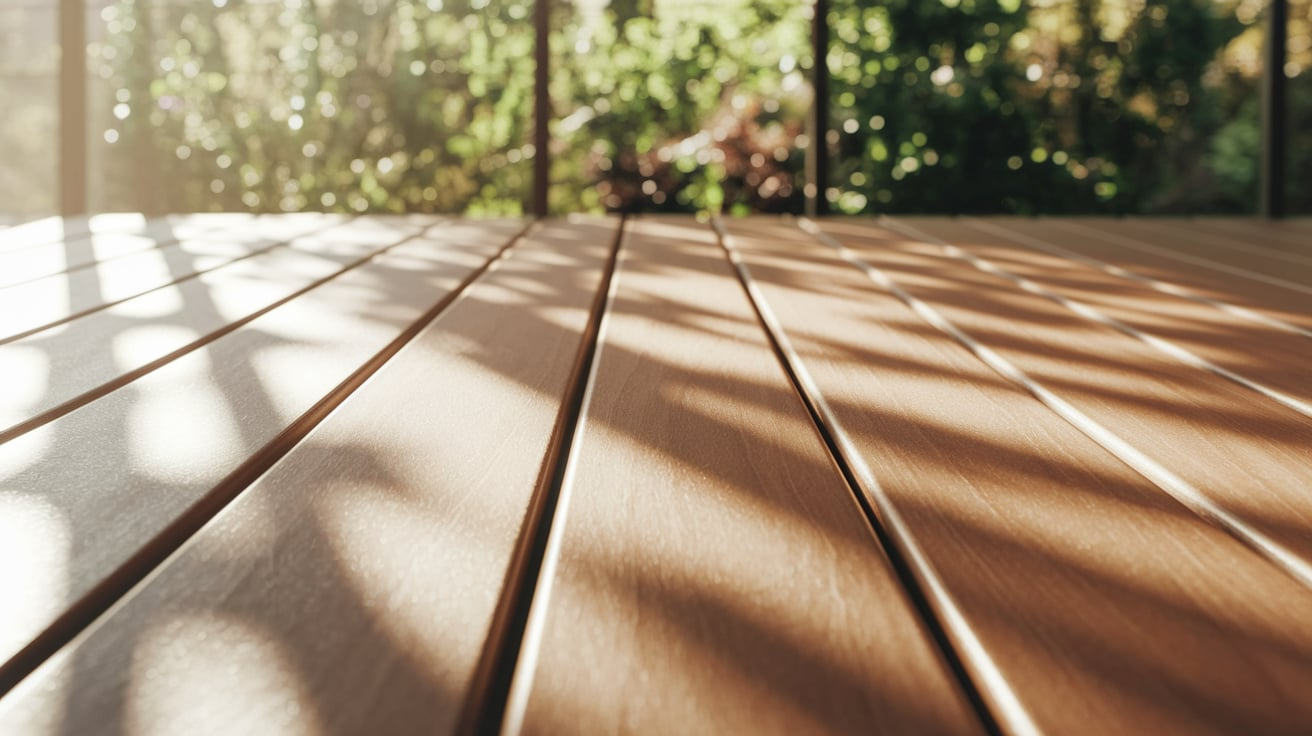
Uncapped boards are made of composite material without a protective cover. They’re less expensive but more likely to absorb moisture or fade over time.
These boards still resist rot and splintering better than wood, but require a bit more care and are best suited for dry, mild climates.
3. Solid Composite Boards
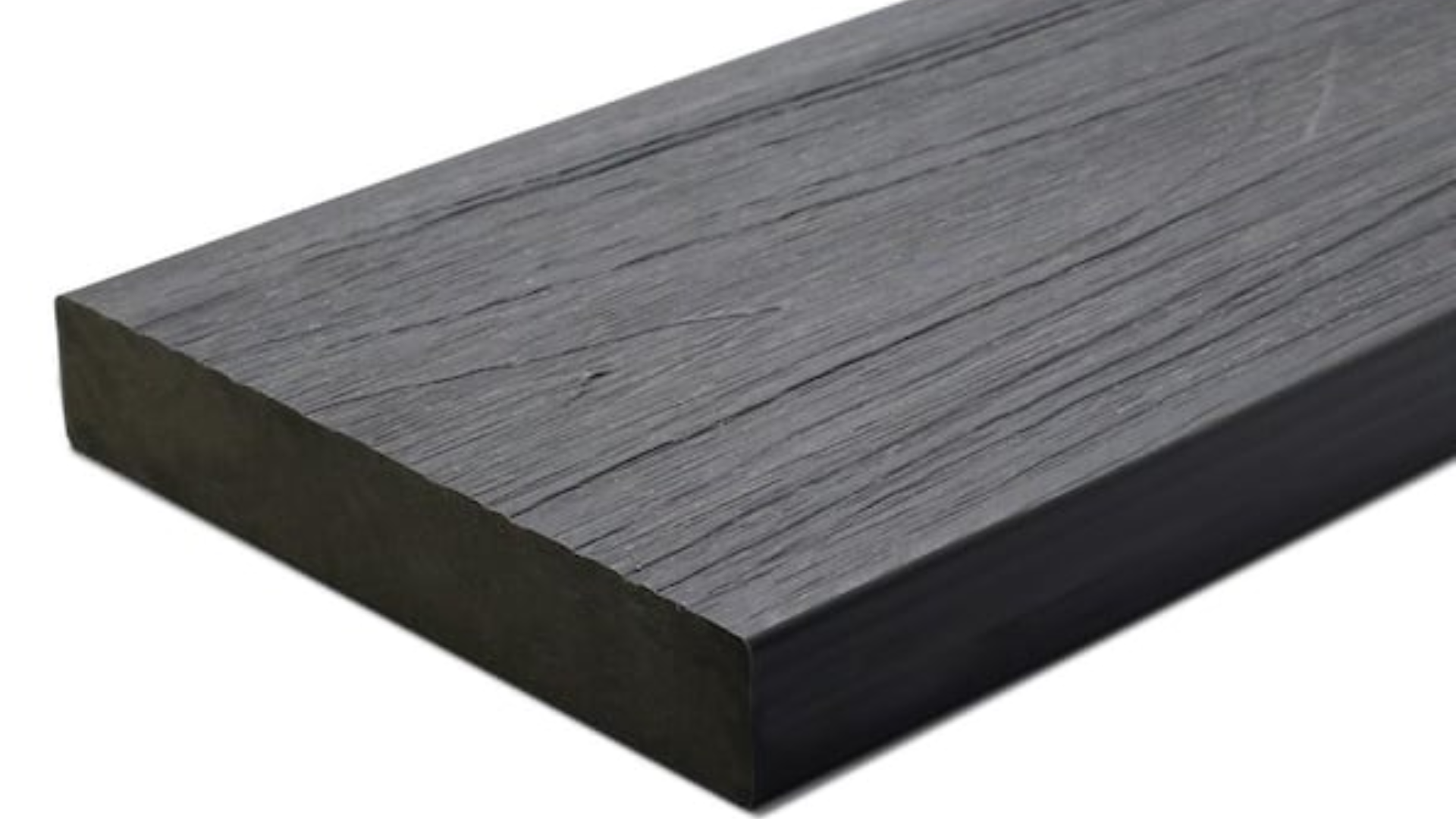
Solid composite boards are dense, strong, and built to withstand the test of time. They offer a wood-like feel and are better at supporting weight.
Heavier and more stable underfoot, they’re ideal for structural areas like stairs, but can expand or contract more with changes in temperature.
4. Hollow Composite Boards
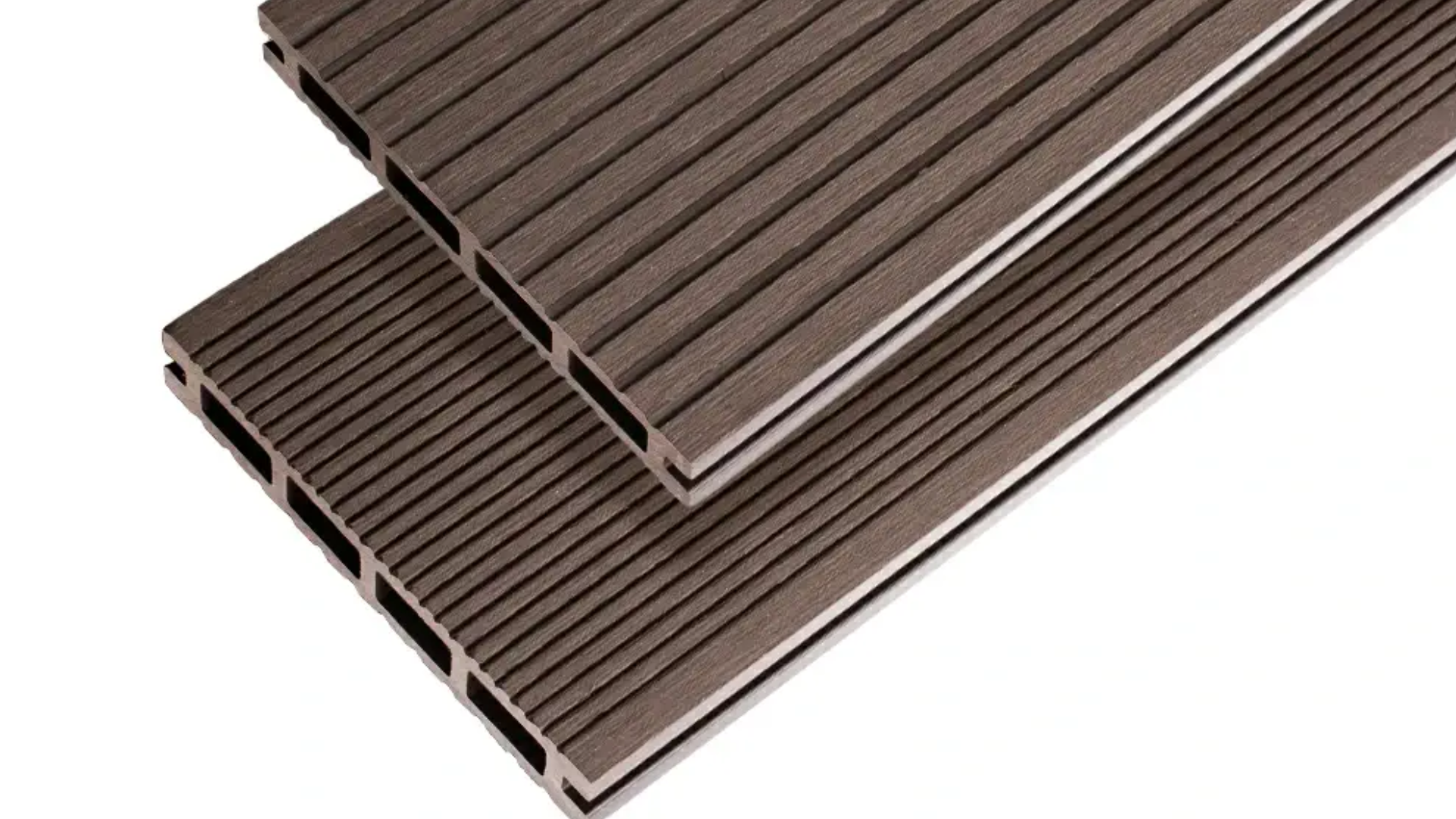
Hollow boards are lightweight and easier to handle, making installation quicker and more affordable. They typically need end caps for a finished look.
While less sturdy than solid boards, they’re suitable for most residential decks and reduce material costs without sacrificing overall weather resistance.
5. Wood-Plastic Composite

WPC decking combines recycled wood fibers and plastic for a natural appearance with enhanced durability.
It resists rot, insects, and moisture while offering the beauty of wood.
WPC is one of the most widely used composite options, offering a good balance of performance, appearance, and cost.
6. PVC Composite Decking
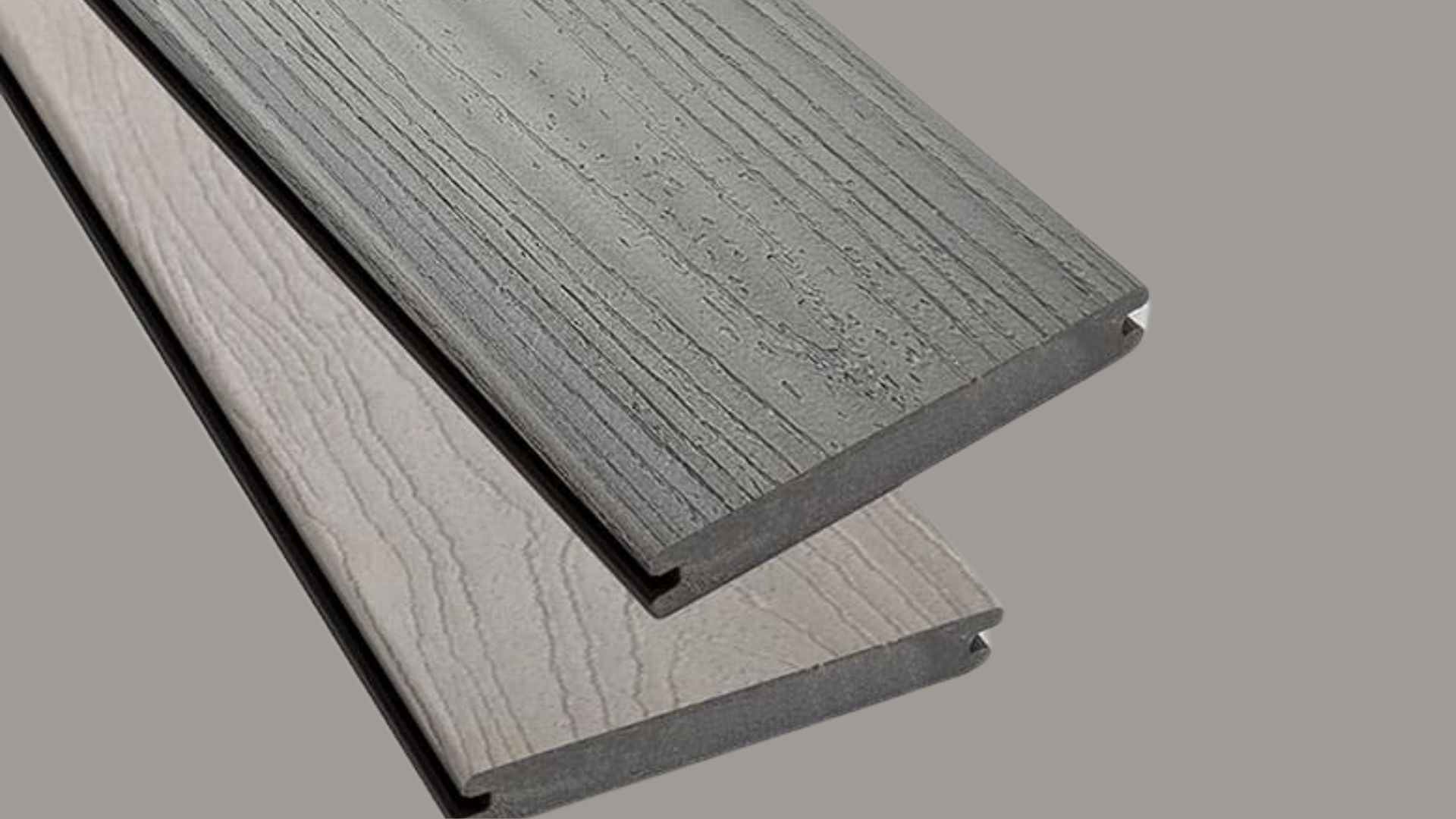
PVC decking is made entirely from plastic, with no wood content.
It resists moisture, mildew, and bugs better than WPC. Lightweight and durable, it’s perfect for wet climates.
While less wood-like in texture, it comes in many colors and requires very little maintenance over the years.
7. First-Generation Composite Decking

First-gen composite boards were the early models without protective caps. They’re prone to fading, staining, and mold buildup.
While durable compared to wood, they lack the performance and longevity of modern options. You may find them on older decks, but they’re rarely used in new builds today.
8. Modern Composite Decking

Today’s composite decking features advanced technology, including capping, rich textures, and fade-resistant colors.
These boards replicate the appearance of natural wood while providing superior strength and protection.
They’re built to withstand extreme conditions and require almost no upkeep, making them ideal for homeowners who want beauty without the hassle.
9. Grooved vs. Ungrooved Boards

Grooved boards work with hidden fasteners for a sleek, screw-free look. Ungrooved boards need traditional screws through the top.
The choice affects both the appearance of the deck and the installation method.
Grooved options offer clean lines, while ungrooved boards provide flexibility for certain layouts or edge pieces in your design.
Textures and Finishes of Composite Decking
Composite decking doesn’t just hold up well, it also looks great. Today’s boards come in many textures and finishes that make your deck feel like a true outdoor retreat.
- Wood-like grain patterns: Many boards have embossed patterns that look and feel like real wood, adding natural charm to your space.
- Visual interest and realism: The added texture gives your deck a more realistic and inviting look, perfect for outdoor gatherings.
- Improved safety with texture: Deeper grain textures enhance grip, making the deck less slippery, especially in areas near pools or in wet conditions.
- Smooth vs. rough options: Some boards have a sleek finish for a clean look, while others offer a rougher texture for more traction.
- Wood-look finishes in popular styles: Choose from finishes that resemble oak, walnut, cedar, and more, without the labor-intensive work of sanding or staining.
- Style options for any home: Whether your vibe is rustic, coastal, or modern, there’s a texture and finish to match your taste.
With so many textures and finishes to pick from, it’s easy to find composite decking that’s both safe and stylish. It’s a smart way to add comfort and charm to your outdoor space.
Color and Style Options of Composite Decking
Composite decking comes in a wide range of colors and styles to fit any home. Whether you like a natural wood look or want something bold and modern, there’s an option that works for you.
| Color Option | Style Description | Best For |
|---|---|---|
| Light Brown | Soft wood-like tone, warm and inviting | Traditional or rustic homes |
| Dark Brown | Deep wood finish, rich and bold | Classic or high-end outdoor spaces |
| Gray | Cool and modern look, great with metal or stone | Modern, coastal, or urban settings |
| Red Cedar | Reddish hue with wood texture | Homes with warm tones or brick exteriors |
| Driftwood | Weathered, soft gray tone | Coastal or farmhouse-style spaces |
| Black or Charcoal | Bold and sleek, minimal texture | Contemporary or contrast-heavy designs |
| Multi-Tone Colors | Blend of light and dark shades for natural variation | Natural wood look with added depth |
With so many colors and styles available, it’s easy to find composite decking that fits your home’s look and your personal taste.
From classic wood tones to modern grays and bold shades, the right choice can make your outdoor space feel even more like home.
Benefits of Composite Decking
Choosing composite decking comes with several advantages that make it a smart and practical option for homeowners.
1. Low Maintenance
Unlike traditional wood decks, which require regular sanding, staining, or sealing, composite decking only needs a simple wash with soap and water to maintain its appearance.
It won’t splinter, crack, or rot, which means you’ll spend more time enjoying your deck and less time fixing it.
2. Weather and Pest Resistance
Composite boards are designed to withstand harsh outdoor conditions.
They resist moisture, mold, and mildew, and they don’t attract termites or other wood-boring insects.
3. Long-Term Cost Savings
Although the upfront cost may be higher than that of wood, composite decking ultimately pays off over time.
With fewer repairs and no yearly treatments, you’ll save money on maintenance.
4. Eco-Friendliness
Most composite decking is made from recycled wood and plastic, helping reduce waste.
It’s a more sustainable option for those who want an environmentally friendly outdoor space.
Environmentally Friendly Decking
If going green is one of your home goals, composite decking is a smart and eco-friendly option. It helps you enjoy your outdoor space while being kind to the planet.
- Made from recycled materials: Many composite boards use reclaimed wood fibers and recycled plastics, helping reduce landfill waste.
- Saves natural resources: By using leftover wood and plastic, fewer trees are cut down, and less plastic ends up in landfills or oceans.
- May support LEED points: Certain eco-friendly decking options can contribute to LEED certification points for green building projects.
- Sustainable production: Many brands prioritize clean manufacturing, utilizing less energy and water in the production process.
- Take-back programs: Some companies offer programs to recycle old boards instead of sending them to the dump.
- Look for clear policies: Choose brands that share their recycling rates or show strong eco-friendly values.
Choosing composite decking with the planet in mind means you get a strong, low-maintenance deck, and the peace of knowing you’ve made a greener choice for your home.
Conclusion
Composite decking comes in various types, each offering something distinct.
Whether you’re choosing between capped and uncapped, solid or hollow, or WPC versus PVC, it’s essential to understand what each option brings to the table.
Some options are better suited for wet climates, while others are more affordable or offer a closer appearance to real wood.
Think about what matters most to you: weather resistance, budget, style, or ease of installation.
Additionally, consider your local climate and the amount of time you are willing to dedicate to maintenance. These factors will help guide you to the right choice for your home.
If you’re still unsure, talking to a decking professional can make things easier. They can recommend the best type based on your needs.
Do you have a question or would you like to share your plans? Leave a comment below. I’d love to hear from you and help in any way I can!

